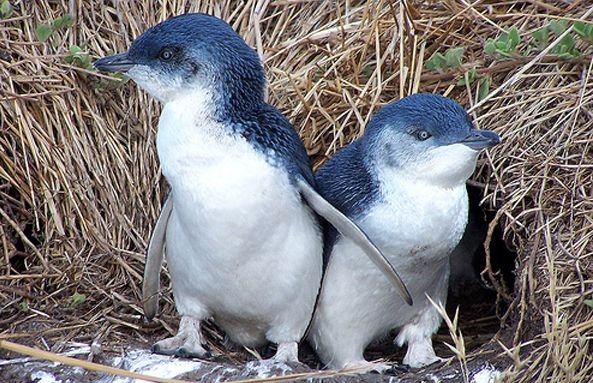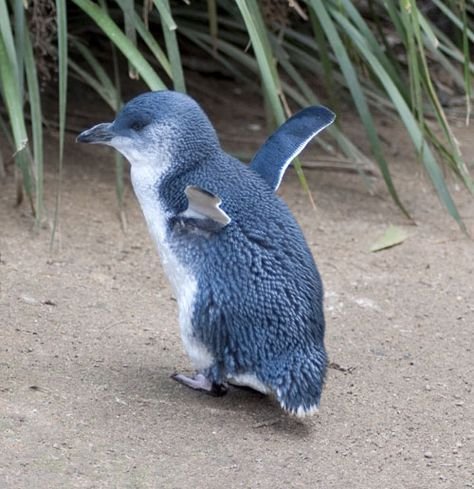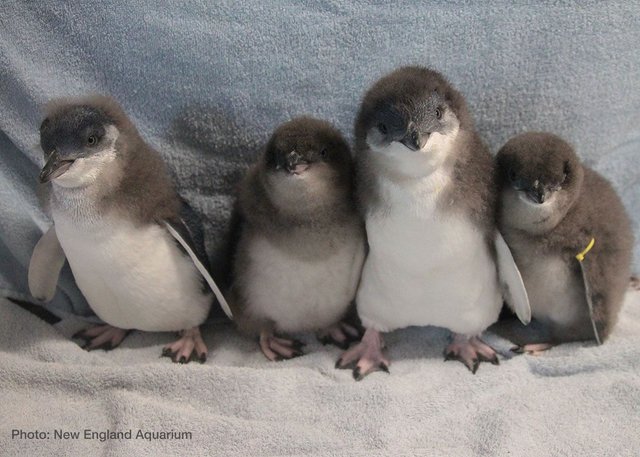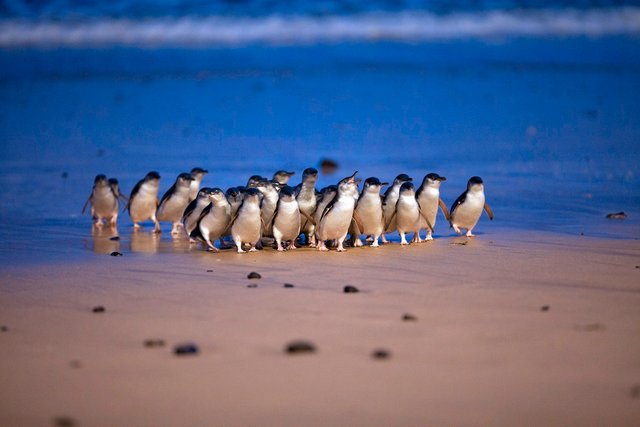Little Blue Penguin
Little Blue Penguin
My other favorite penguin. When I first discovered these little sweethearts was on a show called Penguin Island Television series.
If you get the chance watch it.
Seeing the little penguin in person is on my bucket list.

Pinterest
Little Blue Penguin Facts – Eudyptula minor
Eudyptula Genus – Little Penguins
Other names: Fairy penguin, little blue penguins, blue penguins, kororā (Maori)
Height: 13-15 in.
Weight: 1.75-3 lb.
Subspecies: There’s debate over the existence of five or six.
Life expectancy in the wild: 6-20 years.
Approximated Population: 1 Million
Population tendency: Decreasing
IUCN Conservation status: LC

Pinterest
Appearance
Also known as Fairy penguins, blue penguins, and little blue penguins, this species is the smallest of all penguins; a fully developed adult can weigh only 2.6 lb. They have a fragile and delicate appearance highlighted by a bluish color unique among all species of penguins.
Their plumage has a distinctive bright blue-gray color that goes from the head down the back, wings, and tail. In the head below the eyes, they have dark gray feathers spreading across their cheeks. The rest of the neck, chest and belly are white. Big black claws contrast with their pink legs. The beak is short mainly black with some white parts.
Chicks have a brown and white plumage that turns to the blue color that characterizes adults after their first molt.

Pinterest
This species is the smallest of all penguins.
Where do they live?
Little penguins largest colonies are in Oamaru, Chatham Island and Banks Peninsula in New Zealand, as well as Phillip Island in Australia and along the coast of Tasmania, around the entire coastline of New Zealand and most of the southern coast of Australia. Surprisingly, lost individuals have been found on coasts of Chile.
Their natural habitat consists of trees, rocky shores, and edgy lands, still reachable by humans.
Skills and Behavior
Little blue penguins are mainly nocturnal as they perform most of their activity during the night creating small groups of about ten members or less. They are not migratory and stay close to their colonies most of the time.
They show diverse forms of aggressive behavior that range from warnings, chasing intruders, physical contact and violent attacks, each complemented with body movements and vocalizations. Although these warnings only involve opening and waving their flippers, attacks include powerful beak strokes.
Unlike larger species, they can dive only to a depth of 230 feet for approximately 35 seconds, but usually they do it in depths ranging from 59 to 102 ft.
They are not migratory and stay close to their colonies most of the time.
These small penguins are very noisy, especially at night. This could be a natural defense mechanism that compensates for their tiny size. Each of them has a particular sound that is used to distinguish themselves from the crowd.
They can get used to human presence and stop fearing them, especially when they are in captivity or when sharing territory with tourists.
Molting
Molting for blue penguins lasts 16 days. In some regions, molting starts sometime between mid-February and mid-March, but this changes according to their location. Usually, they lose up to 40% of their body mass during molting.
What do they eat?
They love small fish, especially sardines, and anchovies, but they can also hunt squid, krill, and small octopus. However, the kind of prey may change to adapt to the availability of food in their habitat.
Reproduction
Sexual maturity: 2 years females, 3 years males.
Incubation period: 35-36 days.
Normal clutch: Two eggs.
Little blue penguins are monogamous most of the time, and they are strongly attached to their partners, although still there are a few cases of “divorce”.
Little blue penguins are monogamous most of the time.
Females lay two eggs, the first sometime between the middle of September to November and the second a few days later. The male is responsible for selecting the place for the nest, and they prefer hidden places with little light as below tree trunks or inside small crevices on the rocks.
Each egg weighs about 1.90 oz, and the hatchlings weigh only between 1.2 and 1.6 oz. Once the chicks are born, the parents make short trips for food, traveling only 4.9 to 5.5 miles away from the coast. Chicks first molt is after 50-65 days and become independent after 60 to 80 days.
Threats
Predatory birds like skuas, gulls and sheathbills are the primary predators of eggs and chicks, while introduced animals like rats, dogs, and cats can be a problem for both chicks and adults.
Major threats include forgotten fishing nets and other marine pollution that cause choking in these small penguins. Food availability reduction in recent years translates into larger energy expenditure for them to make longer and more dangerous trips to get food.
Fairy penguin range map
Distribution of Little Blue Penguin.


Photo Premier of Victoria
Sources:
https://www.penguins-world.com/little-blue-penguin
.